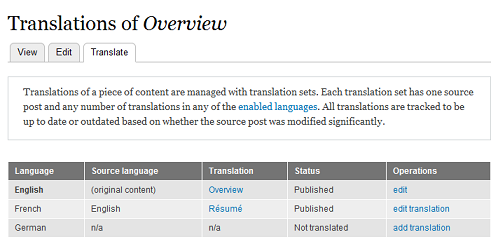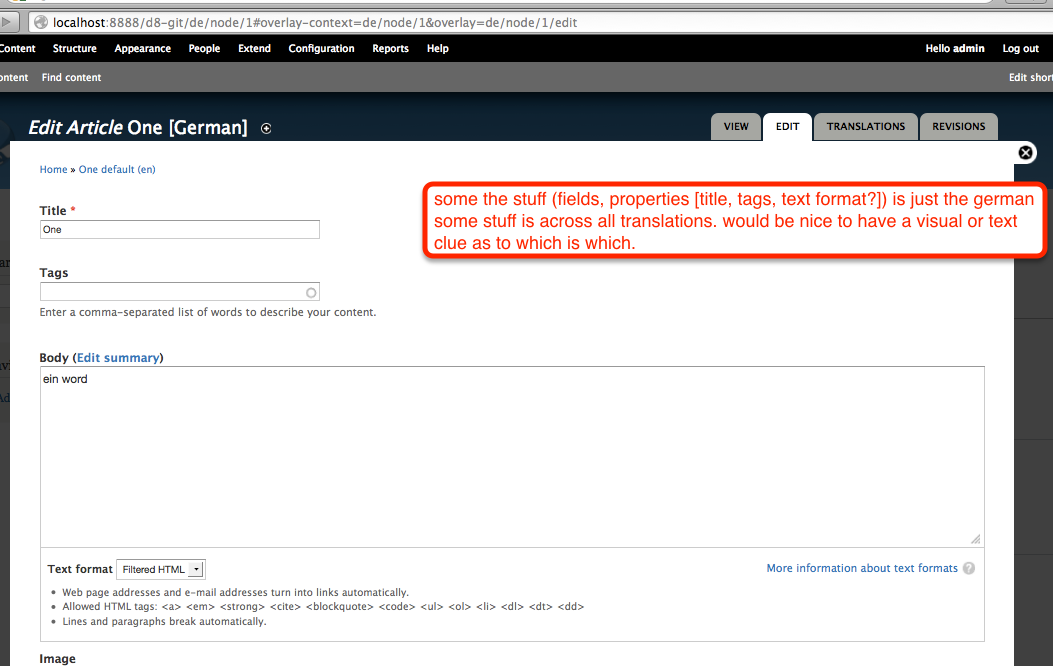

With a market share of around 2%, Drupal is a solid contender for the fourth place as the CMS (after WordPress, Joomla and Squarespace) of choice for website owners.

Configuring XLIFF/HTML export in Drupal.
DRUPAL ENTITY TRANLSATIONS TRANSLATE TAB HOW TO

Instead, you’ll want to translate the fields on the content type via the Manage fields interface to add translated field labels and select list options and things a user will actually see. It may be beneficial to translate these if you have multilingual editors, but on most sites, an end-user will not see any of these. Using this method will add the language prefix of the user-selected language to the URL and will keep the site in that language until a different language is selected or the prefix is manually removed from the URL.Ĭonfiguration translation can be done for any entity, but translation for most entity configurations will not be seen by an end-user. For example, when translating a content type-only the content type name, description and the label of the title field are translatable. Each method has pros and cons, depending on your site and user base. The settings here will let Drupal know how to tell which language to display. The page header is a typical location.Īfter you've added all of the languages you need for the site, click on the ' Detect and selection tab' in the languages interface. Place this via block layout (or your own preferred method) to allow users to change the site language. Once you add a language to the site, the Drupal language switcher block will become available to your list of blocks.
DRUPAL ENTITY TRANLSATIONS TRANSLATE TAB CODE
The list of approved codes may not contain the specific code you want to use for the language prefix-often seen in the URL when viewing the site in a different language–but the prefixes can customized to display whatever you want to the end-user. Using approved language codes will prevent fatal errors with Views and other possible bugs. Approved language codes can be found in the Commerce Guys Address repository.

It is very important that you use an approved language code. If you choose to add a custom language (at the very bottom of the language list) you will be prompted to choose a language code and language name as well as the language direction you wish to use.


 0 kommentar(er)
0 kommentar(er)
